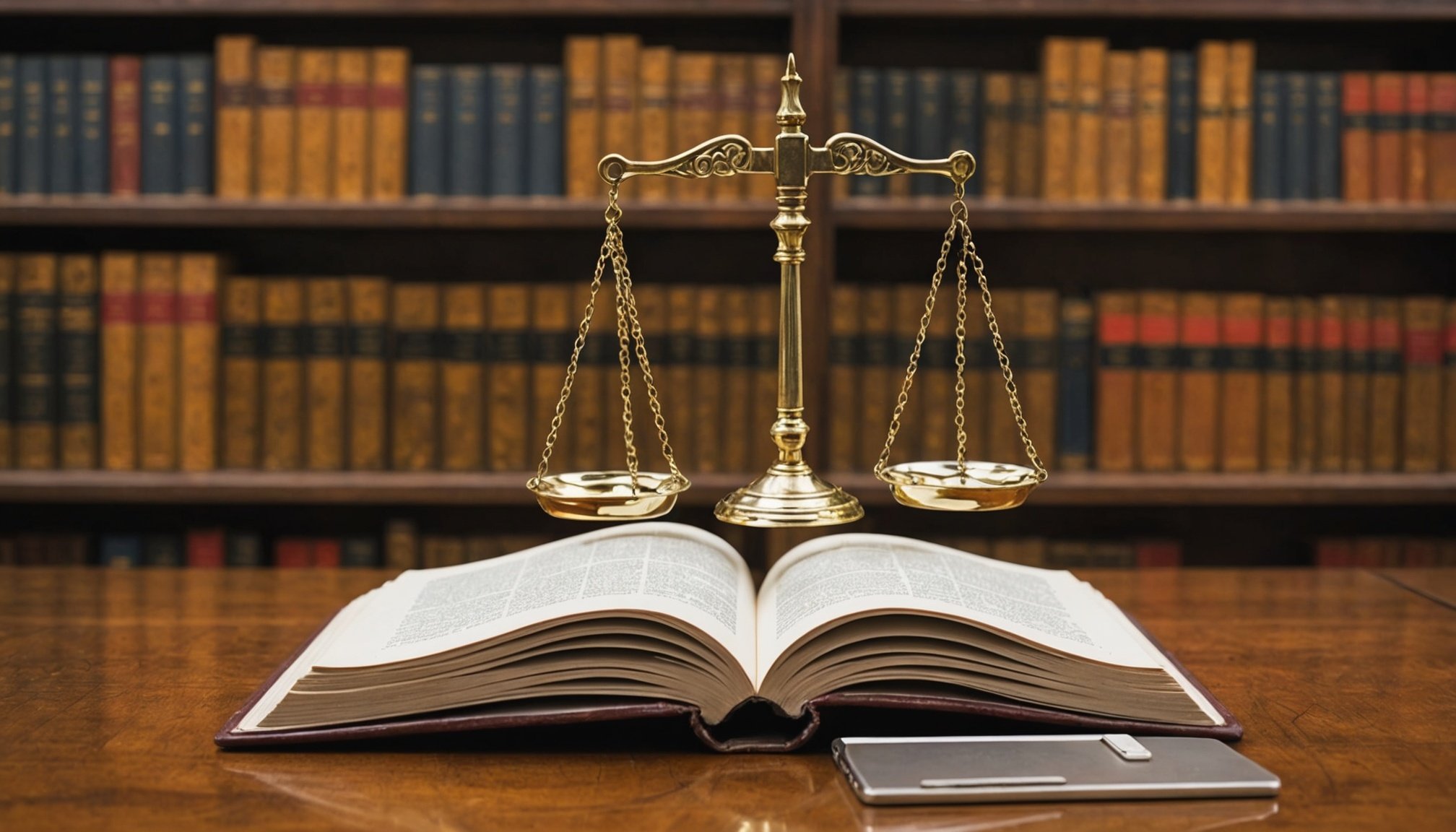Unlocking UK Intellectual Property Law: The Essential Handbook for Emerging Publishers
Understanding the Basics of Intellectual Property Law in the UK
When venturing into the world of publishing, whether you are an author, a publisher, or an entrepreneur, understanding the intricacies of intellectual property (IP) law is crucial. Intellectual property law in the UK is designed to protect creative works, inventions, and brands, ensuring that creators and innovators can reap the benefits of their efforts.
What is Intellectual Property?
Intellectual property encompasses a range of rights, including:
In the same genre : Navigating financial support: a complete resource for new small enterprises in the uk
- Copyright: Protects literary, dramatic, musical, and artistic works, as well as sound recordings, films, and broadcasts.
- Patents: Covers new inventions, including products and processes.
- Trade Marks: Safeguards brand names, logos, and other distinctive signs.
- Design Rights: Protects the visual appearance of a product.
- Trade Secrets: Encompasses confidential information that gives a business a competitive edge.
Navigating Copyright Law in the UK
Copyright is perhaps the most relevant IP right for publishers. Here’s what you need to know:
What is Protected by Copyright?
Copyright protects original literary, dramatic, musical, and artistic works. This includes books, articles, music, films, and even software. For a work to be protected by copyright, it must be original and fixed in a tangible form.
Also to see : Essential blueprint for starting a uk non-profit focused on renewable energy projects
How Long Does Copyright Last?
In the UK, copyright typically lasts for the lifetime of the author plus 70 years. For example, if an author publishes a book in 2024 and dies in 2050, the copyright on that book will expire in 2120.
Key Considerations for Publishers
- Licensing and Permissions: Publishers must obtain the necessary permissions or licenses to use copyrighted material. This can include obtaining rights from authors or other copyright holders.
- Fair Dealing: The UK allows for fair dealing, which permits limited use of copyrighted material without permission for purposes such as criticism, review, or research.
Patents and Their Role in Publishing
While patents are more commonly associated with inventions, they can also be relevant in the publishing industry, especially when it comes to innovative technologies or processes.
What Can Be Patented?
To be patentable, an invention must be new, involve an inventive step, and be capable of industrial application. This could include new software, digital platforms, or other technological innovations used in publishing.
The Patent Process
The process of obtaining a patent involves several steps:
- Application: Submitting a detailed application to the UK Intellectual Property Office (IPO).
- Examination: The IPO reviews the application to ensure the invention meets the criteria for patentability.
- Grant: If approved, the patent is granted, providing exclusive rights for a specified period, typically up to 20 years.
Trade Marks: Protecting Your Brand
Trade marks are essential for any business looking to establish a strong brand identity.
What Can Be Registered as a Trade Mark?
Trade marks can include words, phrases, logos, colors, and even sounds. The key is that the mark must be distinctive and not descriptive of the goods or services it represents.
The Registration Process
To register a trade mark, you need to submit an application to the UK IPO. Here are the key steps:
- Search: Conduct a search to ensure the mark is not already in use or too similar to existing marks.
- Application: Submit the application, including the mark and the classes of goods or services it will be used for.
- Examination: The IPO examines the application to ensure the mark meets the criteria for registration.
- Publication: If the application is successful, the mark is published in the Trade Marks Journal.
- Registration: After a period for opposition, the mark is registered, providing exclusive rights.
Design Rights: Protecting the Visual Appearance of Products
Design rights protect the visual appearance of a product, which can be crucial for publishers, especially those involved in producing physical books or other products.
Registered and Unregistered Design Rights
- Registered Design Rights: These provide stronger protection and can be registered with the UK IPO.
- Unregistered Design Rights: These offer automatic protection for the shape and configuration of a product, but the protection is generally weaker and shorter in duration.
Trade Secrets and Confidential Information
Trade secrets and confidential information are vital for businesses looking to maintain a competitive edge.
What Constitutes a Trade Secret?
A trade secret is any confidential and valuable information that is not generally known and is subject to reasonable measures to maintain its secrecy. This could include business strategies, customer lists, or proprietary technology.
Protecting Trade Secrets
To protect trade secrets, businesses should:
- Use Non-Disclosure Agreements (NDAs): Ensure that anyone with access to the information signs an NDA.
- Implement Access Controls: Limit access to the information on a need-to-know basis.
- Educate Employees: Train employees on the importance of maintaining confidentiality.
Legal Advice and Management of Intellectual Property
Managing intellectual property effectively requires a combination of legal knowledge and strategic planning.
Seeking Legal Advice
It is crucial to seek legal advice from a qualified IP lawyer, especially when dealing with complex issues such as licensing agreements, patent applications, or trade mark disputes.
IP Management Strategies
Here are some key strategies for managing IP:
- Conduct Regular Audits: Regularly review your IP portfolio to ensure all rights are up-to-date and protected.
- Monitor Competitors: Keep an eye on competitors to identify potential IP infringements.
- Educate Staff: Ensure all staff members understand the importance of IP and how to protect it.
Practical Insights and Actionable Advice
Here are some practical tips for emerging publishers:
Licensing and Permissions
When using copyrighted material, always obtain the necessary permissions or licenses. Here is a checklist to consider:
- Identify the Copyright Holder: Determine who owns the copyright to the material you wish to use.
- Obtain Permission: Request and obtain the necessary permission or license.
- Document the Agreement: Ensure the agreement is in writing and clearly outlines the terms.
Protecting Your Own Work
To protect your own work, consider the following:
- Register Your Work: Register your work with the relevant IP office (e.g., UK IPO for trade marks and patents).
- Use Copyright Notices: Include copyright notices on your work to deter infringement.
- Monitor for Infringement: Regularly monitor for any unauthorized use of your work.
Case Studies and Examples
The Case of Superbus and Copyright Infringement
In a recent case, a photographer contested the use of his photographs by the production companies of the rock band Superbus. The court confirmed the originality of the photographer’s work and highlighted the importance of clear contracts when licensing copyrighted material[4].
The Importance of Trade Mark Registration
A well-known example is the dispute between Apple Inc. and Apple Corps (the Beatles’ record label) over the use of the Apple trade mark. This case underscores the importance of registering trade marks to avoid costly disputes.
Navigating the complex world of intellectual property law in the UK is essential for emerging publishers. By understanding the basics of copyright, patents, trade marks, design rights, and trade secrets, you can better protect your creative works and business interests.
Key Takeaways
- Copyright: Protects original literary, dramatic, musical, and artistic works.
- Patents: Covers new inventions and processes.
- Trade Marks: Safeguards brand names and logos.
- Design Rights: Protects the visual appearance of products.
- Trade Secrets: Encompasses confidential and valuable information.
By following the practical insights and actionable advice outlined in this handbook, you can ensure that your intellectual property is well-protected, allowing you to focus on what you do best – creating and publishing innovative and engaging content.
Table: Comparison of Key Intellectual Property Rights in the UK
| Intellectual Property Right | What is Protected | Duration of Protection | Registration Requirements |
|---|---|---|---|
| Copyright | Original literary, dramatic, musical, and artistic works | Lifetime of the author plus 70 years | No registration required |
| Patents | New inventions and processes | Up to 20 years | Registration with UK IPO required |
| Trade Marks | Brand names, logos, and other distinctive signs | Renewable every 10 years | Registration with UK IPO required |
| Registered Design Rights | The visual appearance of a product | Up to 25 years | Registration with UK IPO required |
| Unregistered Design Rights | The shape and configuration of a product | Up to 15 years | No registration required |
| Trade Secrets | Confidential and valuable information | As long as the information remains secret | No registration required |
Quotes from Experts
- “Intellectual property is the lifeblood of any creative industry. Protecting it is not just a legal necessity, but a business imperative.” – Sunil Kishor, IP Lawyer
- “Understanding IP law is crucial for publishers. It helps them navigate the complex landscape of rights and permissions, ensuring they can focus on what they do best – creating great content.” – Kishor Pathak, Publishing Industry Expert
By unlocking the intricacies of UK intellectual property law, emerging publishers can safeguard their creative works, build strong brands, and drive innovation in the industry.











